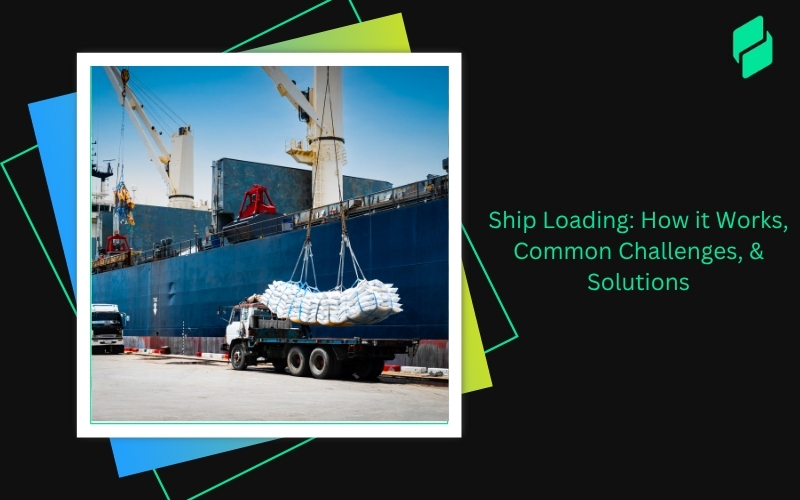Optimize your business: use unlimited savings with Pazago fulfilled now!
Get Started ->Are you lost in the sea of international trade complexities? Have you ever wondered who pays for shipping or what happens if goods are damaged en route? And those customs fees in Germany—are they your responsibility when you operate from India? These are common dilemmas in global logistics, but there's a straightforward solution: Incoterms.
In this blog, we'll explain Incoterms, why they matter, and how you can use them to ensure your trade contracts are transparent, fair, and free of surprises.
What Are Incoterms?

Incoterms, short for International Commercial Terms, are like the rulebook for global trade. They define who's responsible for what, from paying shipping costs to handling customs.
Incoterms were introduced by the International Chamber of Commerce in 1936 and have been updated over the years to stay aligned with the changing global economy. The 2020 update introduced key changes that can make your transactions even smoother.
Why Incoterms Matter
Incoterms play a key role in international trade by providing clarity and reducing costly mistakes:
- Clarity and Avoiding Misunderstandings
Incoterms define responsibilities—transport, insurance, and customs—preventing disputes between buyers and sellers. - Defining Costs, Responsibilities, and Risk
Incoterms specify who pays for what and when risk transfers, ensuring both parties understand their obligations. - Preventing Surprise Costs
By outlining each party's responsibilities upfront, Incoterms helps avoid unexpected fees and reduce hidden expenses. - Ensuring Smooth Transactions
Clear terms streamline the process, ensuring timely delivery and reducing delays, which helps businesses plan better and maintain predictable cash flow.
Now that we understand the significance of Incoterms, let's explore the different categories that help clarify the responsibilities and risks of international trade.
Also Read: Understanding Transportation Charges and Their Different Types
Categories of Incoterms

Incoterms are divided into four categories, each reflecting the level of responsibility and risk assigned to either the seller or the buyer. These categories help simplify the decision-making process for importers and exporters by clearly defining the logistics and financial duties at each stage of the transaction. Here's a breakdown of each category:
- E Terms: Buyer Collects Goods from the Seller's Premises
Under "E" terms, the seller's responsibility is minimal. They only make the goods available at their premises. From that point onward, the buyer handles all transport, costs, and risks.
- F Terms: Seller Delivers Goods to a Carrier
With "F" terms, the seller delivers the goods to a carrier, such as a shipping company. The buyer then takes over, covering transport costs and risk from that point onward.
- C Terms: Exporter Arranges Shipping but Isn't Liable for Damages
"C" terms mean the seller arranges and pays for shipping. However, once the goods are on their way, the buyer assumes all risks during transport.
- D Terms: Seller Bears Cost and Risk Until Goods Are Delivered
The "D" terms are the most seller-heavy. The seller covers all costs and risks, from shipping to delivery, until the goods reach the buyer's destination.
Let's explore specific Incoterms in detail so you can see exactly how these terms apply in various shipping scenarios.
Also Read: CIP Incoterms: Definition, Meaning and Use of Carriage and Insurance Paid To
11 Key Incoterms You Need to Know


Each term outlines specific responsibilities, risks, and costs associated with different stages of the transaction. Whether you're importing or exporting, knowing these terms is essential to ensuring your trade agreements are transparent and mutually beneficial.
Seller's Responsibility: The seller's responsibility is minimal. They simply need to make the goods available at their premises (or another agreed-upon location).
Buyer's Responsibility: The buyer handles every part of the transport process, from loading and shipping to customs. Once the goods are available at the agreed-upon location, the buyer assumes all risks.
Seller's Responsibility: The seller is responsible for getting the goods to a carrier or a designated location. This could be the seller's premises, a port, or another agreed location.
Buyer's Responsibility: Once the seller hands over the goods to the carrier, the buyer assumes the risk and takes responsibility for transportation from that point onward.
Seller's Responsibility: The seller arranges and pays for transportation to a specified destination.
Buyer's Responsibility: The buyer assumes risk as soon as the goods are handed over to the carrier, even though the seller pays for the shipping cost.
Seller's Responsibility: The seller arranges and pays for transportation and insurance up to the specified destination.
Buyer's Responsibility: The buyer assumes the risk once the goods are handed over to the carrier, even if the seller provides insurance coverage during transit.
- DAP (Delivered at Place)
Seller's Responsibility: The seller delivers the goods to a designated destination and handles transport and customs clearance up to that destination.
Buyer's Responsibility: The buyer is responsible for handling customs clearance and covering any import duties or taxes when the goods arrive.
Seller's Responsibility: The seller delivers the goods to a specified place, unloads them, and covers all transportation costs and risks.
Buyer's Responsibility: Once the goods are unloaded and made available at the destination, the buyer assumes responsibility and risks.
Seller's Responsibility: The seller assumes maximum responsibility, covering all costs, risks, and customs duties until the goods are delivered to the buyer's location.
Buyer's Responsibility: The buyer is responsible only for receiving the goods at the agreed-upon destination, with no further obligations for costs or risk.
Seller's Responsibility: The seller is responsible for getting the goods to the port and delivering them alongside the ship. Until this point, the seller bears the cost and risk.
Buyer's Responsibility: Once the goods are placed alongside the ship, the buyer assumes all risk and is responsible for loading, shipping, and onward transportation.
Seller's Responsibility: The seller is responsible for transporting the goods to the port and loading them onto the ship. The seller covers all costs and risks until the goods are loaded onto the ship.
Buyer's Responsibility: Once the goods are loaded onto the ship, the buyer assumes the risk and is responsible for any shipping costs from that point forward.
Seller's Responsibility: The seller covers the transportation costs to the destination port, but their responsibility ends once the goods are on the ship.
Buyer's Responsibility: Once the goods are on board the ship, the buyer assumes all risks and is responsible for any additional costs, such as unloading and customs duties.
Seller's Responsibility: The seller also arranges and pays for insurance for the goods during transit.
Buyer's Responsibility: Once the goods are loaded onto the ship, the buyer assumes all risks, even though the seller covers the insurance and transportation costs up to the destination port.
These Incoterms are the backbone of international trade agreements, helping both parties clearly define responsibilities.
Now that you understand the essential Incoterms, let's examine the 2020 revisions and how they refine these terms for clarity and efficiency.
Understanding the 2020 Incoterms Revisions

The 2020 Incoterms update introduced key changes to make global trade more transparent and efficient. Here's what you need to know:
- Key Changes from the 2010 Versionsome text
- DPU (Delivered at Place Unloaded): This new term replaces DAT (Delivered at Terminal). Now, the seller is responsible for unloading goods at the destination and clearing up any confusion about delivery points.
- CIP (Carriage and Insurance Paid To): The insurance requirements under CIP were upgraded. Sellers must now provide Institute Cargo Clauses (A) insurance, which offers broader protection.
- CIF (Cost, Insurance, and Freight): Like CIP, the CIF term now requires better insurance coverage.
- Impact of DPU and Other Updates
The introduction of DPU is a game-changer for logistics, making seller responsibilities more straightforward for unloading. Additionally, the updated insurance requirements for CIP and CIF offer better protection for buyers, especially for high-value shipments.
The 2020 revisions reduce confusion for Indian businesses, especially regarding risk transfer. DPU streamlines delivery, while updated insurance provisions under CIP and CIF provide more security for buyers. This clarity helps Indian traders avoid disputes and manage risks more effectively in international trade.
What Do Incoterms Not Cover?
While Incoterms provide clarity on key aspects of international trade, they do not cover every detail of a transaction. Here are a few areas that Incoterms do not address:
- Ownership of Goods: Incoterms do not address the transfer of ownership, which is typically defined separately in the contract.
- Payment Terms: Payment schedules and methods are outlined in the trade agreement, not in the Incoterms.
- Quality and Quantity of Goods: Details regarding the quality, quantity, or specifications of the goods must be defined in the sales agreement.
- Dispute Resolution: A framework for resolving disputes between the parties is not provided and must be agreed upon separately.
- Intellectual Property Rights: Any matters concerning intellectual property should be addressed in separate contracts.
- Force Majeure: A force majeure clause must address events beyond either party's control, such as natural disasters or political instability.
- Customs Procedures Beyond Export/Import: While they assign responsibility for customs clearance, Incoterms don't detail the entire customs process or regulations specific to each country.
- Insurance Beyond Basic Coverage: The contract should outline any additional insurance requirements or options beyond the minimum coverage stated in terms like CIP or CIF.
Handling international trade can be challenging, but understanding and applying Incoterms can make the journey much more manageable. However, to make the most of Incoterms, you need the right tools to implement them.
Pazago: Your Partner in Streamlining Global Trade Operations
Pazago offers a comprehensive platform for handling logistics, managing contracts, and ensuring smooth customs clearance. It empowers you to streamline your global trade operations.
Key Benefits of Pazago for Incoterms Implementation:
- Simplified Contract Creation: Easily specify Incoterms and responsibilities in your trade contracts.
- Customs Compliance: Handle complex customs regulations and clear goods on time.
- Real-Time Shipment Tracking: Ensure your goods are on track with real-time updates from global shipping companies.
- Secure Payments: Make international payments faster and more cost-effective, with no hidden fees or limits.
By combining the power of Incoterms with the tools and support of Pazago, you can reduce operational costs, enhance efficiency, and confidently expand your business into new markets.
Conclusion
Understanding Incoterms is key to smooth international trade and clarifying costs, responsibilities, and risks for both buyers and sellers. With the right tools, like Pazago, managing global trade becomes even easier. By using Pazago alongside Incoterms, businesses can reduce operational complexities, optimize efficiency, and confidently navigate international markets.
Ready to simplify your international trade? Start with Pazago today, and let us help you easily optimize your global operations.


.png)








